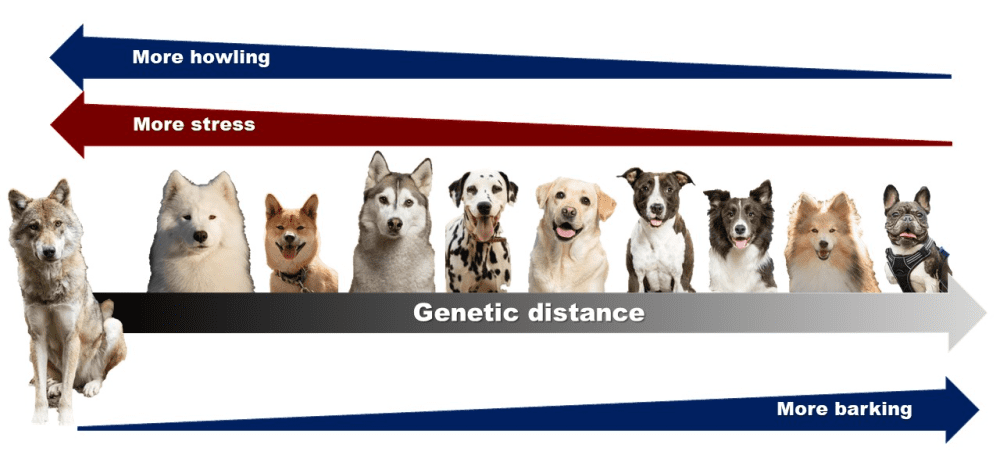Gazing upon the wrinkled face of a pug it can be hard to believe that all dogs are descended from wolves. We know older breeds are genetically more similar to wolves than modern ones, but are there some easy-to-spot indicators as to which is which? A new study says yes, as it found that a dog’s decision to howl rather than bark in response to another dog’s howling is often associated with being genetically closer to wolves when compared to the barkers.
Howling is a form of long-distance communication seen in some canines. In the wild, it comes in handy when marking territory and letting other animals know where you are. In domestic breeds, the role of howling is less clear as some dogs love to howl while others hardly seem to howl at all.
To investigate if there were a genetic explanation for the howlers Vs. barkers debate, researchers at the Department of Ethology, Eötvös Loránd University (ELTE) observed how 68 dogs responded to the sound of wolves howling. They then compared the dogs’ responses to their genetic closeness to wolves.
The results showed that ancient breeds – that are more closely related to wolves – were much more likely to respond to the sound of howling with a howl, and that they were also more stressed out by it. More modern breeds on the other hand were less bothered, and more likely to bark in response to the wolves’ howling.
Older french bulldogs are some of the least likely dogs to get their howl on. Image credit: Lehoczki Fanni and Gáti Oszkár Dániel
“It seems that although howling is present in most breeds’ repertoire, it lost its functionality due to the changed social environment,” explained first author Fanni Lehoczki in a statement, “Thus, modern breeds do not use it in adequate situations.”
Sex was another defining feature in a dog’s likelihood to respond with a howl or a bark.
“What we found is that something is going on with the male sex hormones, as there is no difference between intact and spayed females, but intact and neutered males do behave differently,” continued Lehoczki. “Neutered males, which are in lack of testosterone, howl more in response to the playbacks. As neutered males are suggested to be more fearful, this result can be in line with our findings about responsiveness and more stressed behavior. Thus, the dog howl may mean “I am scared, don’t come closer.”
There was also an age association with the trend, as younger dogs (less than two years old) tended to howl about the same across the board. Dogs two years or older however were more likely to respond with barks and howls depending on their breed’s distance from wolves.
The findings support the idea that howling is something most dogs can do, but its function as a form of communication has grown weaker with increasingly modern breeds that are genetically more distant from their howling, wolfy ancestors. And that this effect becomes more pronounced as dogs get older.
Howling could therefore be considered yet another canine trait that’s been fundamentally changed by the domestication of these animals, turning what was once a crucial tool for communication into something that kicks in when Mariah Carey comes on the radio.
The study was published in Nature Climate Change.
Source Link: How Closely Dogs Are Related To Wolves Can Influence If They Howl Or Bark
